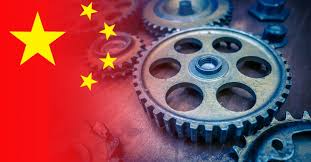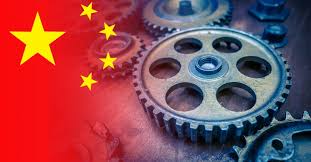
Higher costs of raw materials, equipment maintenance and extreme weather impacted business activity in China resulting the country’s July factory activity growing at the slowest pace in 17 years.
This has given rise to concerns about a possible slowdown the second largest economy of the world.
In July, the official manufacturing Purchasing Manager's Index (PMI) dropped to 50.4 compared to 50.9 in June, showed latest data from the National Bureau of Statistics (NBS) Saturday. However, the index was above the 50-point mark that separates growth from contraction. Analysts had expected it to drop to 50.8
This was the slowest rate of expansion of the index since February 2020 when it was at 35.7 which was the month that lockdowns had been implemented in China to curb the spread of the Covid-19 pandemic.
The PMI's sub-index for production eased down to 51.0 from 51.9 in June, said an NBS official in a statement, which indicated towards issues arising because of equipment maintenance and extreme weather. There was also a drop in the new order sub-index fell to 50.9 compared to 51.5 in the previous month which showed a slowdown in demand.
"The most alarming signal is the new export order index, which is at lowest level since July last year," said Zhiwei Zhang, chief economist of Pinpoint Asset Management.
The new export orders sub-index in July dropped down to 47.7 – marking the third straight month of decline.
The raw material costs sub-index for July was at 62.9 compared to 61.2 in June indicating higher costs of raw materials which potentially also curbed factory output expansion. Profitability of industrial companies has been dented by high raw material prices and has also prevented some Chinese exporters from taking on orders.
Chinese authorities are active not to allow companies to pass on the high factory-gate prices to consumers as that would only add on to the current economic headwinds since underlying demand is still weak.
The construction index dropped to 57.5 compared to 60.1 in June because of extreme weather and the sector is expected to see more hurdled in the near future because of a clampdown on the property market by Chinese authorities, say analysts.
In a surprise move in mid-July, the People's Bank of China (PBOC) lowered reserve requirement ratio (RRR) for banks aimed at propping up the slowing economy. That move released about 1 trillion yuan ($154 billion) in long-term liquidity in the economy.
The Chinese economy has more or less recovered from the pandemic hit last year as the consumption and service sectors of the country are gradually picking up the pace to catch up to the growth in exports and manufacturing.
However, issues of higher prices for raw materials, increase in logistics costs and global supply chain bottlenecks are some of the challenges that the manufacturers are facing. Analysts expect growth in gross domestic product to moderate.
The official non-manufacturing Purchasing Managers' Index (PMI) eased to 53.3 in July, from 53.5 in June, a separate survey from the NBS showed.
(Source:www.investment.com)
This has given rise to concerns about a possible slowdown the second largest economy of the world.
In July, the official manufacturing Purchasing Manager's Index (PMI) dropped to 50.4 compared to 50.9 in June, showed latest data from the National Bureau of Statistics (NBS) Saturday. However, the index was above the 50-point mark that separates growth from contraction. Analysts had expected it to drop to 50.8
This was the slowest rate of expansion of the index since February 2020 when it was at 35.7 which was the month that lockdowns had been implemented in China to curb the spread of the Covid-19 pandemic.
The PMI's sub-index for production eased down to 51.0 from 51.9 in June, said an NBS official in a statement, which indicated towards issues arising because of equipment maintenance and extreme weather. There was also a drop in the new order sub-index fell to 50.9 compared to 51.5 in the previous month which showed a slowdown in demand.
"The most alarming signal is the new export order index, which is at lowest level since July last year," said Zhiwei Zhang, chief economist of Pinpoint Asset Management.
The new export orders sub-index in July dropped down to 47.7 – marking the third straight month of decline.
The raw material costs sub-index for July was at 62.9 compared to 61.2 in June indicating higher costs of raw materials which potentially also curbed factory output expansion. Profitability of industrial companies has been dented by high raw material prices and has also prevented some Chinese exporters from taking on orders.
Chinese authorities are active not to allow companies to pass on the high factory-gate prices to consumers as that would only add on to the current economic headwinds since underlying demand is still weak.
The construction index dropped to 57.5 compared to 60.1 in June because of extreme weather and the sector is expected to see more hurdled in the near future because of a clampdown on the property market by Chinese authorities, say analysts.
In a surprise move in mid-July, the People's Bank of China (PBOC) lowered reserve requirement ratio (RRR) for banks aimed at propping up the slowing economy. That move released about 1 trillion yuan ($154 billion) in long-term liquidity in the economy.
The Chinese economy has more or less recovered from the pandemic hit last year as the consumption and service sectors of the country are gradually picking up the pace to catch up to the growth in exports and manufacturing.
However, issues of higher prices for raw materials, increase in logistics costs and global supply chain bottlenecks are some of the challenges that the manufacturers are facing. Analysts expect growth in gross domestic product to moderate.
The official non-manufacturing Purchasing Managers' Index (PMI) eased to 53.3 in July, from 53.5 in June, a separate survey from the NBS showed.
(Source:www.investment.com)














